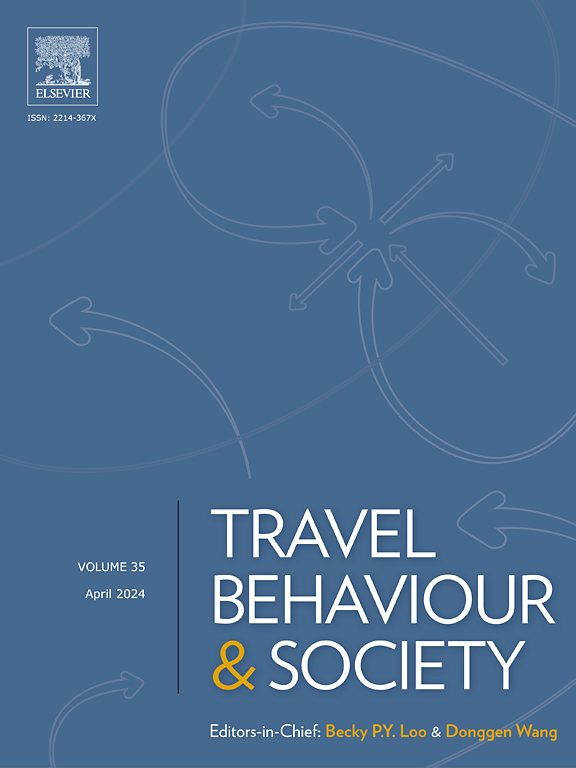Out-of-home activity adaptations of commuters and non-workers to the power outage at home induced by hurricane Irma
IF 5.1
2区 工程技术
Q1 TRANSPORTATION
引用次数: 0
Abstract
Compared to hurricane evacuation travel, considerably less is known about travel by those who remain in the at-risk area and experience utility/infrastructure disruptions. How do people adapt their activities/travels in the aftermath especially with the impact of a power outage at home? With data collected after Hurricane Irma (2017), this study focuses on understanding commuters’ and non-workers’ activity participation and the interrelationships among those activities, by testing the significance of variables typically used in activity-based travel demand modeling studies. Its purpose is to compare the modeling results with those from past studies made in normal situations so that potential behavior changes (reflected by the parameter significance) can be observed. This study employs structural equation modeling (SEM) to capture the complex interrelationships among activities. Two major findings from this study are that (1) people are more likely to engage in multiple out-of-home discretionary activities (include dining, social visits, and leisure activities) during a hurricane-induced power outage at home and (2) commuters provided with flexible working arrangements (such as telecommuting) are more likely to work a shorter day during the period. Increased out-of-home discretionary activity participation and decreased working duration are likely to cause activity/trip pattern changes from an aggregate view. Such changes can affect the decision-making of public agencies, such as the priority placed on different locations for debris removal and power restoration. This study serves as a starting point and contributes to future studies making more in-depth investigations into post-impact travel and travel during infrastructure disruptions.
求助全文
约1分钟内获得全文
求助全文
来源期刊

Travel Behaviour and Society
TRANSPORTATION-
CiteScore
9.80
自引率
7.70%
发文量
109
期刊介绍:
Travel Behaviour and Society is an interdisciplinary journal publishing high-quality original papers which report leading edge research in theories, methodologies and applications concerning transportation issues and challenges which involve the social and spatial dimensions. In particular, it provides a discussion forum for major research in travel behaviour, transportation infrastructure, transportation and environmental issues, mobility and social sustainability, transportation geographic information systems (TGIS), transportation and quality of life, transportation data collection and analysis, etc.
 求助内容:
求助内容: 应助结果提醒方式:
应助结果提醒方式:


